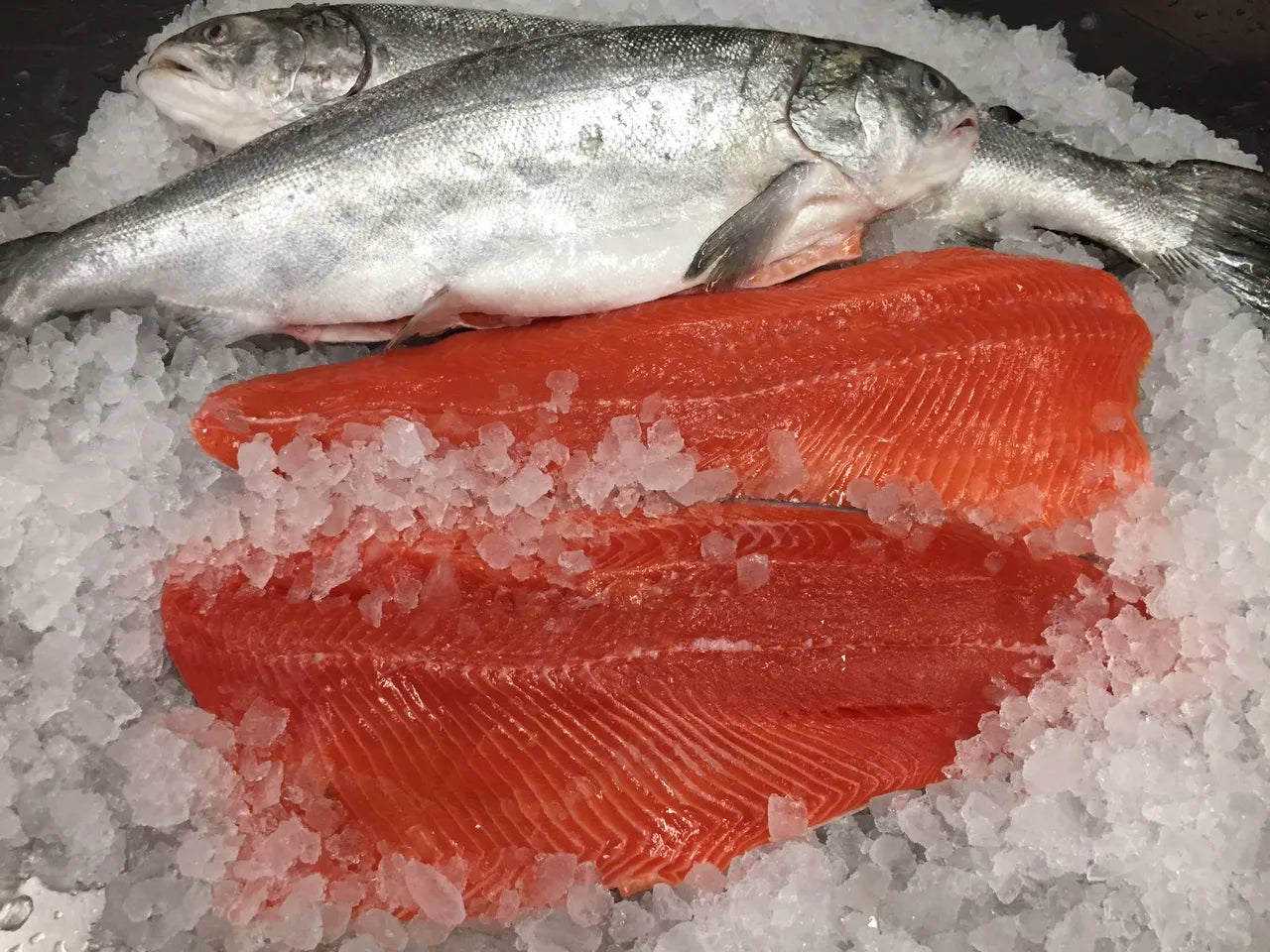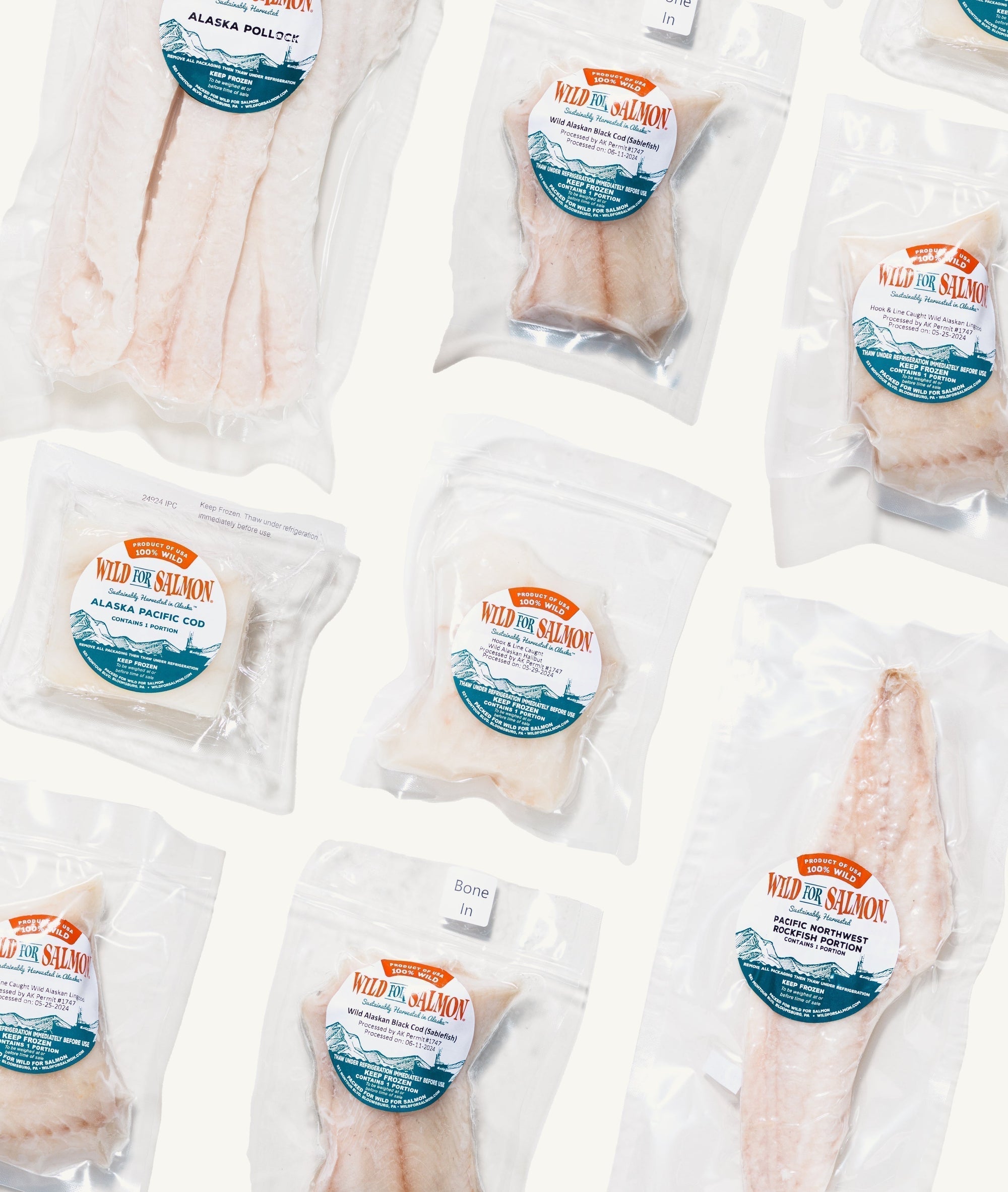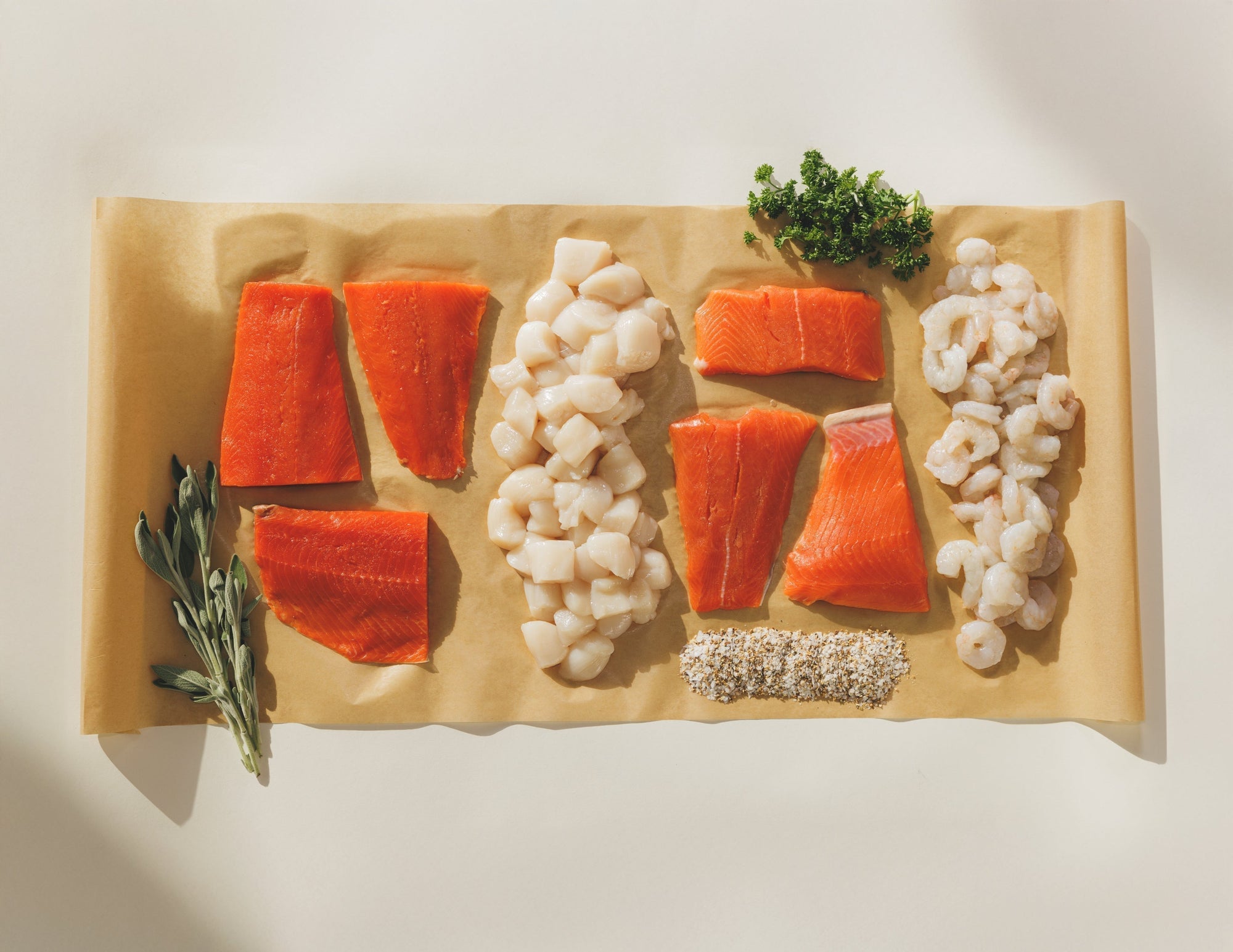*Article Published by TimeHealth*
Written by: Mahita Gajanan
When Don Read feeds the salmon on his fish farm, he adds in a chemical that changes the color of their flesh.
Without the chemical in their feed, the farm-raised salmon would naturally be white — not an appealing look to customers seeking the classically reddish-pink fish, which is the second most popular in the U.S. And Read is not alone. Most fish farmers add pigmenting compounds to the food they give their salmon, so that the fish achieve the same deep pink color that wild salmon get naturally from the crustaceans and other food in their environment.
"If we didn't do it, customers wouldn't buy it," said Read, who runs West Creek Aquaculture, a British Columbia-based fish farm. "Consumers buy what they're familiar with. Consumers buy what they are comfortable with. They won't go into the store to buy white salmon."
Read is right. Consumers will pay up to $1 per pound more for darker colored salmon compared to salmon with lighter hues, according to research by DSM, a company that supplies pigmenting compounds to the salmon feed industry. Wild salmon, which is darker than farmed salmon, can typically cost about three times as much as farmed salmon. And it's harder to come by. Although salmon is very popular among Americans — as of 2015, the total supply of salmon to the U.S. was 1.8 billion pounds, according to the National Oceanic and Atmospheric Administration — about 70% of the fish is farmed. The writer Paul Greenberg — author ofFour Fish and American Catch, books about local seafood and wild seafood — said darker salmon fares better on the market because the deep red carries cultural significance, a reminder of a time before mass farming when salmon was "the fish of the rich."
“Salmon is the most popular fish in America in part because of the color,” Greenberg said. “It’s exotic, it stands out. When you think about it, most fish you see in the market are going to have some variant on white, gray or beige. The red of salmon just pops.”
In both wild and farm-raised salmon, that red color comes from pigmenting compounds called carotenoids, which are found in crustaceans, algae and other naturally occurring sources. While wild salmon get their color by eating shrimp and krill, farm-raised salmon generally have carotenoids added to their feed, either through natural ingredients like ground-up crustaceans or synthetic forms created in a lab. At West Creek, carotenoids derived from algae are included in the salmon's food. Without the added compounds as part of their diet, farm-raised salmon would look quite different than what customers would expect.
One of the chemicals in carotenoids that gives salmon their red shade is called astaxanthin. It's safe for customers to eat — according to the U.S. Food and Drug Administration, it can be included in salmon feed as long it does not exceed 80 milligrams per kilogram and is used to enhance the pink, red or orange shade of the salmon, among other guidelines. Health food stores even sell astaxanthin in pill form as an antioxidant supplement for humans.
The pigmenting compound doesn't come cheap. It is the most expensive element of salmon feed, according to a 2011study, taking up nearly 20% of total fish feed costs. Controlling and optimizing the concentration of astaxanthin in fish food is time and labor intensive, study authors found.
Some fish farmers say they add carotenoids to salmon feed because it provides the nutrients salmon require to grow properly, not because of the color difference. Sebastian Belle, executive director of the Maine Aquaculture Association, which represents the state's fish farmers, said farmers are very careful when using colorant supplements because of the high price.
"It is expensive enough that farmers are very judicious about how much they use, and basically just use enough to meet the nutritional requirement of the animal," he said. "They don't do it to amp the color up."
Read, though, said that if customers were more inclined to buy white salmon, he would use "significantly less" colorant in the feed.
"We'd be very, very happy if we didn't have to use it," he said. "But that's not the way it works."



